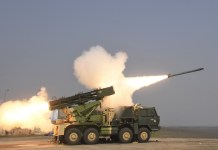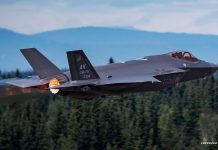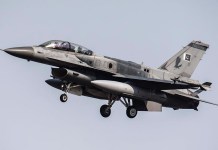The Australian Army launched its first Precision Strike Missile (PrSM) in collaboration with the US Army as part of the ongoing Exercise ‘Talisman Sabre 2025′. The test provides a glimpse into Canberra’s long-range strike capability, designed to deter the People’s Republic of China (PRC).
“The Albanese Government has delivered on its commitment to rapidly boost the Australian Defence Force’s (ADF) long-range strike capability with the test firing of a Precision Strike Missile (PrSM) in Australia for the first time today,” the Australian Department of Defense said in a statement.
The PrSM is a next-generation, long-range precision strike missile (range of about 400-500 kilometers) developed by Lockheed Martin, designed to be launched from the M142 High Mobility Artillery Rocket System (HIMARS). Australia received the HIMARS in March and the PrSM in June 2025.
“The test conducted today was two years ahead of schedule and followed the delivery of the first PrSM a year ahead of schedule, as well as the first HIMARS two months ahead of schedule. It comes after Australia and the United States signed a Memorandum of Understanding earlier this year for PrSM production, sustainment, and follow-on development,” the Australian DoD emphasised in its press release.
The test was conducted jointly by Australian and US Army officials at the Mount Bundey Training Area in the Northern Territory, as part of Talisman Sabre — Australia’s largest multinational military exercise, which kicked off earlier this month.
“A HIMARS launcher sent PrSM about 70 km to hit a stationary target during the live fire,” US Army Chief of Staff Chief Technology Officer Alex Miller told reporters on July 25. He stated that the anticipated flight duration was roughly six to seven minutes.
During a media briefing, US Army Colonel Jon Harvey, director of the Theatre Fires Element for US Army Pacific, stated that soldiers from the 14th Regiment, 10th Brigade, fired the PrSM, indicating a new level of cooperation between the army and one of its AUKUS counterparts.
The 10th Brigade is a new unit headquartered in Adelaide’s Edinburgh Defence Precinct. It is expected to be armed with the National Advanced Surface-to-Air Missile System (NASAMS) and the M142 High-Mobility Artillery Rocket System (HIMARS), the designated launch platform for the long-range Precision Strike Missile.

It comes days after the US and Australian Army joined forces to conduct the first-ever live firing from the Typhon Mid-Range Capability (MRC) system, as reported by the EurAsian Times at the time.
The acquisition and test launch of the PrSM is part of a broader Australian strategy that focuses on long-range strike capability.
Australia’s Minister for Defence Industry, Pat Conroy, said, “Today’s PrSM firing is another example of the Albanese Government accelerating long-range strike capabilities for the ADF, alongside the firing of Standard Missile 6, the Tomahawk missile, and the Naval Strike Missile last year.”
Australia’s Defense Strategic Review (DSR) 2023 specifically called for the acquisition and local development of long-range missiles to prepare for “high-intensity conflict” and “potential threats” in the Indo-Pacific. Defence Minister Richard Marles earlier highlighted the need for capabilities that provide “impactful projection,” implicitly addressing China’s military reach.
The move aligns with the rapidly evolving security environment in the Indo-Pacific. China has made no bones about its intentions to expand its influence and reach far-off seas, including the Australian doorstep.
For instance, a Chinese People’s Liberation Army Navy (PLAN) task group conducted two live-fire drills near Australia and New Zealand in February this year without providing adequate notice.
Australian lawmakers and analysts have repeatedly flagged China’s aggressive tactics, such as the coercive handling of territorial disputes and the risky interceptions of ships and aircraft operating in international waters and airspace over the South China Sea. They maintain that China poses the greatest security threat to Australia, which is strategically positioned in the Indo-Pacific region.
The relationship between Australia and China is rocky, characterized by both trade cooperation and military confrontation. Despite deepening trade and diplomatic ties, as evident in Albanese’s visit to China this month, Australia continues to feel the heat from China’s growing presence in the Pacific Island Countries (PICs), as shown by its opposition to the security deal signed between China and the Solomon Islands.
Moreover, Australia is the closest US ally in the South Pacific and is expected to be a party in a potential US-China conflict. While the Australian leadership has not explicitly stated that it would aid the United States against China, the military ties between the two allies are robust, and areas of cooperation continue to expand. This essentially means that Canberra’s participation in such a conflict cannot be ruled out.
The US has been steadily expanding its military presence in Australia, as explained by the EurAsian Times in past reportage. It is believed that Australia’s military facilities will be crucial for conducting military operations against China, given its strategic location.
The Long-Range Precision Strike Missile
The PrSM is a surface-to-surface missile designed for precision strikes against a variety of targets, including command and control centers, air defense systems, troop concentrations, and potentially naval assets in future increments.
Efforts to provide soldiers with a more capable and versatile weapon system to meet the challenges of future conflicts led to the development of the Precision Strike Missile (PrSM) in 2020, which is intended to replace the ATACMS.
It is designed to be compatible with the High Mobility Artillery Rocket System (HIMARS), a truck-mounted rocket artillery system, as well as the Multiple Launch Rocket System (MLRS). Each HIMARS can carry two PrSMs, doubling payload capacity.
While the HIMARS has already demonstrated its worth in combat areas such as Ukraine, where its rapid fire and ability to evade retaliation have made it a highly valued system, the addition of the PrSM to this platform significantly enhances its strategic utility.
The PrSM has a range of up to 500 kilometers in its initial increments, with potential future versions expected to exceed 1,000 kilometers—a significant reach compared to existing systems, such as the Guided Multiple Launch Rocket System (GMLRS), which has a range of approximately 70-150 kilometers.
This long-range missile features a modular, open-systems architecture, allowing for adaptability to various mission profiles, including those with high-explosive or penetrating warheads. It uses advanced guidance systems, such as INS/GPS, which ensures high accuracy.
It is a highly survivable platform, engineered to penetrate anti-access/area denial (A2/AD) environments, countering advanced air defenses like those deployed by near-peer adversaries, such as China.
The missile comes in two variants: Increment 1 and 2. The Army currently uses primary Increment 1 variants of PrSMs, which carry a unitary high-explosive warhead. Although the missiles are precision-guided, they are solely meant to attack stationary targets.
The Increment 2 missiles are expected to feature a multi-mode seeker and the capability to engage moving targets. The present development focuses on this version for anti-ship applications, although it may also be applied to other target sets. The service plans to develop and induct increments of 3 and 4 missiles under the program.
The US has been able to create a missile that can travel farther, thanks to America’s exit from the Intermediate-Range Nuclear Forces Treaty with Russia early in 2019. The development of rockets with a range of 499–5,000 kilometers had been banned under the treaty.
Earlier this year, Australia signed an agreement with the US to co-produce the missile, pledging about AUD 310 million over the next decade to become a full “cooperative partner” in the PrSM program.
- Contact the author at sakshi.tiwari9555(at)gmail.com
- Follow EurAsian Times on Google News




